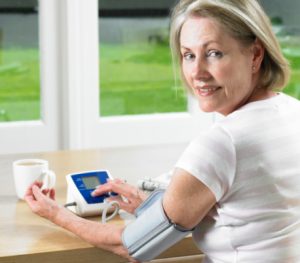 It seems we’re all concerned about our blood pressure, whether it’s too high or too low. If your doctor has raised concerns about blood pressure, you may have gone out and purchased an at-home device to monitor it. By now, you probably know that you shouldn’t check your blood pressure after a meal, after physical activity, or while standing up if you want it to be accurate.
It seems we’re all concerned about our blood pressure, whether it’s too high or too low. If your doctor has raised concerns about blood pressure, you may have gone out and purchased an at-home device to monitor it. By now, you probably know that you shouldn’t check your blood pressure after a meal, after physical activity, or while standing up if you want it to be accurate.
It’s important to note that there isn’t a single “best” time to check your blood pressure. In fact, your doctor will never make a diagnosis of high blood pressure from a single visit. Instead, consistent high blood pressure readings are required for an accurate diagnosis.
Advertisement
Blood pressure is typically lowest right when you wake up and varies up to 30 percent throughout the day. This is the result of hormone changes, activity levels, and eating.
What your blood pressure numbers mean
There are two numbers involved in a blood pressure reading: systolic and diastolic. Systolic, the top number, refers to the amount of pressure in the arteries with every heartbeat. Diastolic, the bottom number, measures the pressure in arteries between heartbeats.
Normal blood pressure is considered to be 120/80 mmHg, prehypertension is 120-139/80-90 mmHg, stage one hypertension is 140-159/90-99 mmHg, stage two hypertension is 160+/100+, and hypertensive crisis is a reading of over 180/110.
What is the best time to check your blood pressure?
Purchasing a blood pressure monitoring device is a great first step in taking control of your health. However, knowing when the best time is to collect this data and how to interpret it is key to understanding and effectively managing high blood pressure conditions.
Blood pressure readings can fluctuate throughout the day, which makes it important to check readings several times and at different points. Checking your BP monitor about five to six times will help you obtain a good idea of where your blood pressure lies. Establishing a routine of checking your monitor will help this effort.
The following is an example of the information your doctor needs to better assess your blood pressure:
| Time | Position | BP reading | Comments |
|---|---|---|---|
| 7am | Lying | 140/85 | Just woke up |
| 12:30pm | Sitting | 160/75 | Kids were over |
| 2 pm | Sitting | 145/60 | Resting |
If you have already been diagnosed with high blood pressure, it’s a good idea to check it at the same times each day. This will provide more consist readings that are not affected by external factors. It can also help show you if your blood pressure medication is working.
When taking blood pressure medication, you should see your blood pressure decreasing shortly after your prescribed dose. The best time to check is just before you take your medication, keeping a note of that value, then measuring your blood pressure again before you’re scheduled to take your next dose. This will help gauge if enough medication is being used to help treat your high blood pressure.
What are the advantages of checking your blood pressure at home?
Taking charge of your health is a great way for you to feel empowered, and using a portable blood pressure monitor can help you with this effort. They are easy to use, relatively inexpensive, and help you control blood pressure than visits to the doctor.
Conditions such as diabetes have special blood pressure restrictions. For this reason, if more diabetes patient were to take advantage of home monitoring blood pressure tools, it will give them more control over their disease.
Studies have shown that more frequent monitoring of blood pressure allows more opportunities to detect and correct abnormalities that may be the cause. It also allows patients to keep their blood pressure in the desired range.
Blood pressure is affected by body position, breathing, emotion, exercise, and sleep. It is lowest when we are sleeping and rises when we are excited, stressed, or exercising. While temporary increases in blood pressure are normal, recognizing constant changes can give you a true picture of your blood pressure.
Check blood pressure in the morning for stroke risk: Study
Data was analyzed from individuals in Japan and researchers found that checking blood pressure in the morning was a greater predictor of stroke risk, as opposed to checking it at night.
Blood pressure has a tendency to be higher in the morning, especially among Asian populations. Therefore, morning blood pressure readings are more important in Asian populations.
The study consisted of 4,300 Japanese people who had at least one factor for heart disease—either high blood pressure, high cholesterol, or diabetes. Over the course of two weeks, participants monitored their blood pressure at home—once in the morning and again in the evening. Participants were then followed for four years and 75 strokes were recorded.
A morning blood pressure reading higher than 155 mmHg was associated with a risk of stroke that was seven times higher than a morning reading below 135 mmHg. Evening blood pressure over 155 mmHg was not associated with an increased risk of stroke compared to a reading below 135 mmHg.
Advertisement
Evening blood pressure readings may be less predictive of stroke risk because other factors—such as hot baths, warm showers, or eating—may be influencing blood pressure.
Although morning blood pressure readings have been linked with higher stroke risk, taking blood pressure medication in the morning has not been found to be more effective.
The findings were done on Japanese participants only, so further research is required to determine if the results apply to other populations as well.
